Key takeaways:
- Feminist fashion serves as a powerful form of self-expression, reflecting identity, autonomy, and resistance.
- Oral history is vital for preserving personal narratives, connecting generations, and understanding the cultural context of fashion.
- The link between fashion and feminism illustrates how clothing can signify empowerment and challenge societal norms.
- Shared stories in fashion foster community, solidarity, and inspire collective action for change within the feminist movement.

Understanding Feminist Fashion
Feminist fashion is more than just clothing; it’s a powerful statement about identity, autonomy, and resistance. I remember the first time I wore a shirt that boldly proclaimed my beliefs; it felt liberating, as if I were wearing my values for the world to see. When we choose what to wear, it’s not just about style; it’s about declaring who we are and what we stand for in a society that often tries to dictate those choices.
As I explore different trends, I often find myself asking, “How does this piece represent me?” It’s fascinating how certain garments can evoke feelings of empowerment or even rebellion. For instance, when I sported a vintage feminist graphic tee to an event, the compliments and conversations it sparked opened up dialogues about gender equality and social justice, reinforcing my belief that fashion can be a catalyst for change.
Additionally, I see feminist fashion as a celebration of intersectionality, encompassing diverse voices and experiences. I once attended a fashion exhibit focused on the contributions of women of color, and it struck me how each outfit told a unique story of struggle and triumph. That experience deepened my understanding of how fashion can reflect the complexities of identity and community, prompting us to acknowledge and uplift the myriad narratives within the feminist movement.
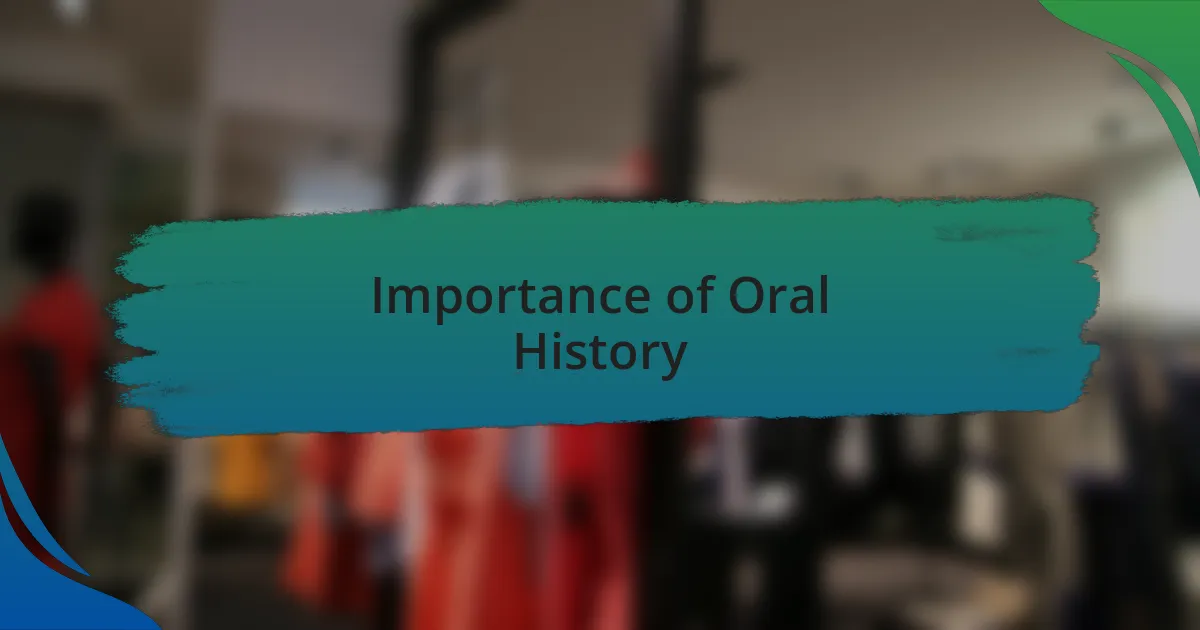
Importance of Oral History
Oral history plays a crucial role in capturing personal narratives that might otherwise be lost. I recall a conversation I had with my grandmother about her experiences in the fashion industry during the ’70s. Hearing her stories about navigating sexism and societal expectations deepened my appreciation for the garments she wore and the battles she fought, reminding me that every piece of clothing carries a story.
Moreover, oral history connects generations, allowing us to learn from the triumphs and struggles of those who came before us. I often ponder how my own journey in feminist fashion is influenced by the voices of women who paved the way. When I listen to these stories, I feel an incredible sense of responsibility to honor their experiences and ensure that their legacies inform future discussions around fashion and identity.
Finally, oral history offers a lens through which we can comprehend the broader cultural and political contexts of fashion. When I share stories from my community about how clothing choices reflect activism, it sparks dialogues about how fashion intersects with social movements. This exchange of narratives reinforces the idea that every individual’s voice contributes to a larger tapestry of feminist fashion, affirming the importance of preserving and amplifying these experiences.
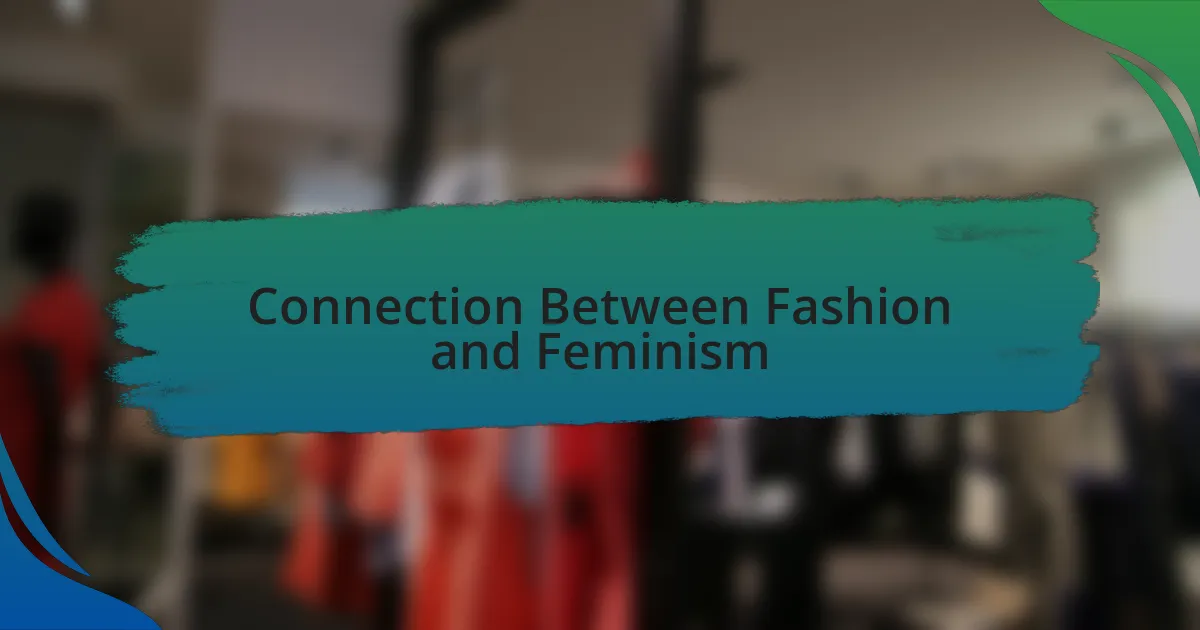
Connection Between Fashion and Feminism
Fashion and feminism are intricately linked, as clothing choices often reflect personal empowerment and societal challenges. I still vividly remember the first time I wore a bold, colorful feminist slogan tee, feeling an exhilarating mix of defiance and pride. In that moment, I realized how fashion could serve as a powerful statement, offering women a way to communicate their beliefs without uttering a word.
The evolution of women’s fashion simultaneously represents progress and resistance against patriarchal norms. It’s fascinating to observe how styles have changed over the decades, with each era reflecting the shifting tides of gender equality. For instance, when I look back at the 1960s and the introduction of miniskirts, I can’t help but admire the audacity of women who claimed their sexuality through fashion during a time of societal constraint. Isn’t it intriguing how garments can symbolize liberation and challenge the status quo?
Moreover, fashion has the unique ability to unite communities under shared values and experiences. I often find solace in attending fashion shows that prioritize inclusivity and sustainability, where women from diverse backgrounds celebrate their identities. That sense of belonging reminds me how, through fashion, we can cultivate solidarity and inspire collective action for change. It leaves me questioning: how can we further harness the power of fashion in our ongoing fight for equality?
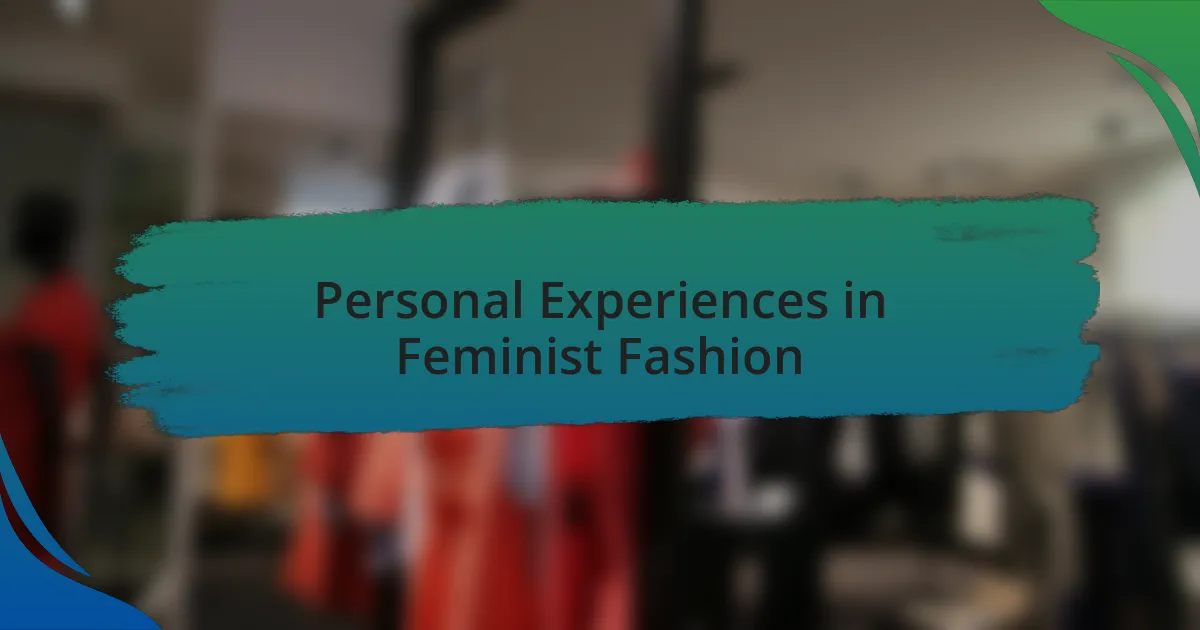
Personal Experiences in Feminist Fashion
Diving into my experiences, I recall the excitement I felt when I first attended a feminist fashion event. Surrounded by like-minded individuals, each outfit was a testament to personal stories and struggles. It was a delightful reminder of how clothing can spark conversations about identity and empowerment.
One of my favorite pieces in my wardrobe is a vintage jacket with patches that speak to various movements. I remember wearing it during a community gathering where women shared their stories of resilience and triumph. That evening, I felt deeply connected to others — my jacket was more than an accessory; it was a symbol of solidarity and shared experiences.
Reflecting on these moments, I can’t help but wonder where we will go next in this journey. How will the next generation of feminists redefine their style to reflect their values? I believe that as we continue to embrace diverse expressions of feminism through fashion, we also empower ourselves and others to challenge the norms that seek to confine us.
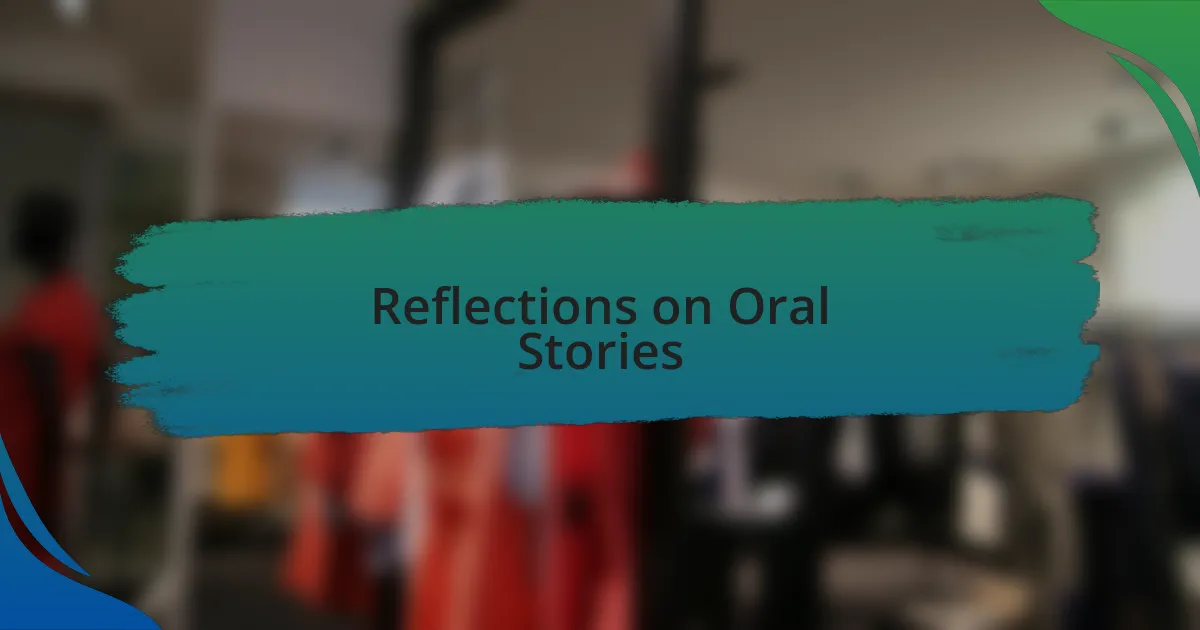
Reflections on Oral Stories
Listening to oral stories has always captivated me, especially those shared in intimate settings like community gatherings or workshops. I remember one evening when a woman spoke passionately about her journey through the fashion industry, faced with both bias and opportunity. Her story was not just a narrative; it felt like a quilt stitched with the threads of her life, full of vibrant colors that represented her struggles and victories.
These tales often resonate deeply, illuminating the collective experiences of women who navigate the ever-evolving world of fashion. I think about the woman who spoke of her grandmother’s hand-me-downs, each piece carrying its own history and meaning. Reflecting on such stories, I realize they invite us to consider our own connections to clothing: What stories do our outfits tell? How do they shape our identities as feminists today?
Oral histories, rich in emotion and authenticity, often challenge the mainstream narratives we see in media. The power of a simple story shared over coffee can be transformative, urging us to reclaim and reinterpret our fashion choices. I find myself wondering: How can we encourage more women to share their stories, weaving a fabric of experience that not only highlights individual journeys but also connects us in solidarity?
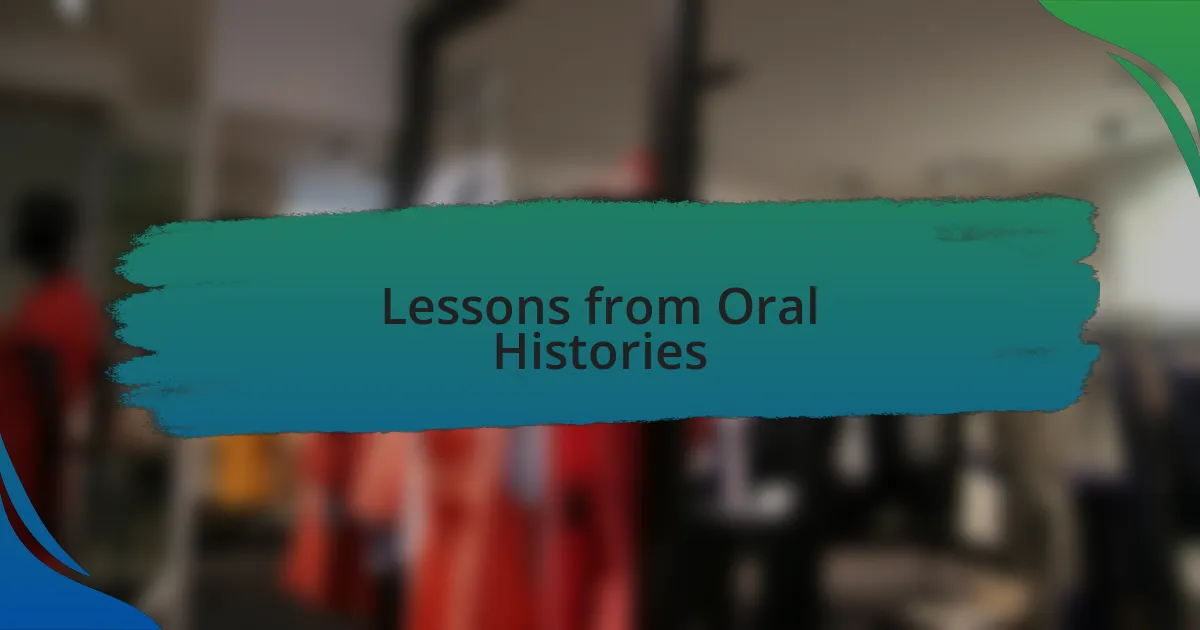
Lessons from Oral Histories
The lessons drawn from oral histories are profound and often unexpected. I vividly recall a workshop where a participant shared her experience of making clothes from reclaimed materials, emphasizing sustainability. This lesson wasn’t just about fashion; it was about resilience and creativity in the face of societal pressures to conform. How many of us have overlooked the potential of our own discarded fabrics?
Reflecting on these stories reminds me of the power of community. One woman recounted how her collective of seamstresses transformed their neighborhood by creating visual narratives that spoke to women’s empowerment. This made me ponder: What impact might we create if we prioritized these shared experiences in our fashion dialogues?
Through these narratives, I’ve learned that every garment can tell a story. For instance, one shared about the significance of the color red in her cultural attire, symbolizing strength and rebellion. It’s enlightening to realize that behind every piece of clothing lies not just fabric and thread, but history, identity, and meaning. What does your wardrobe convey about who you are and what you believe?